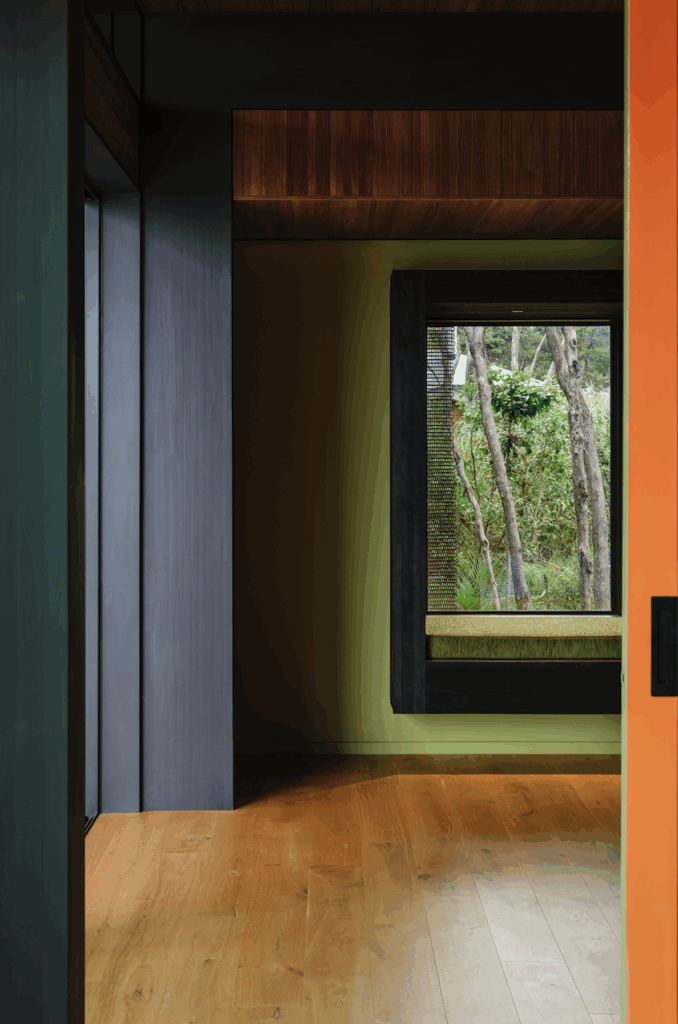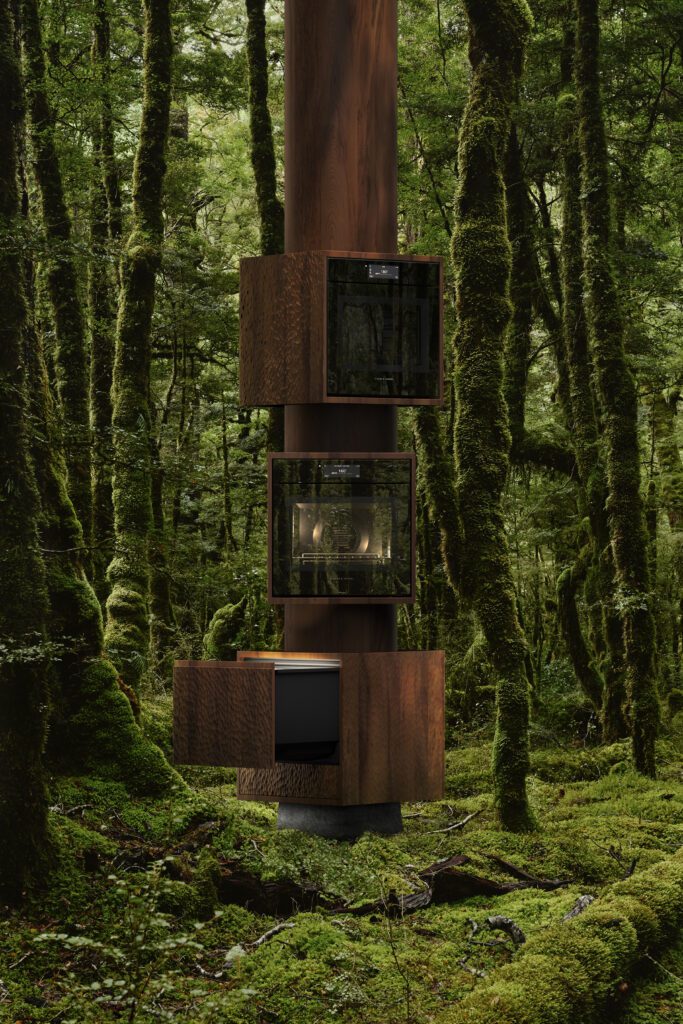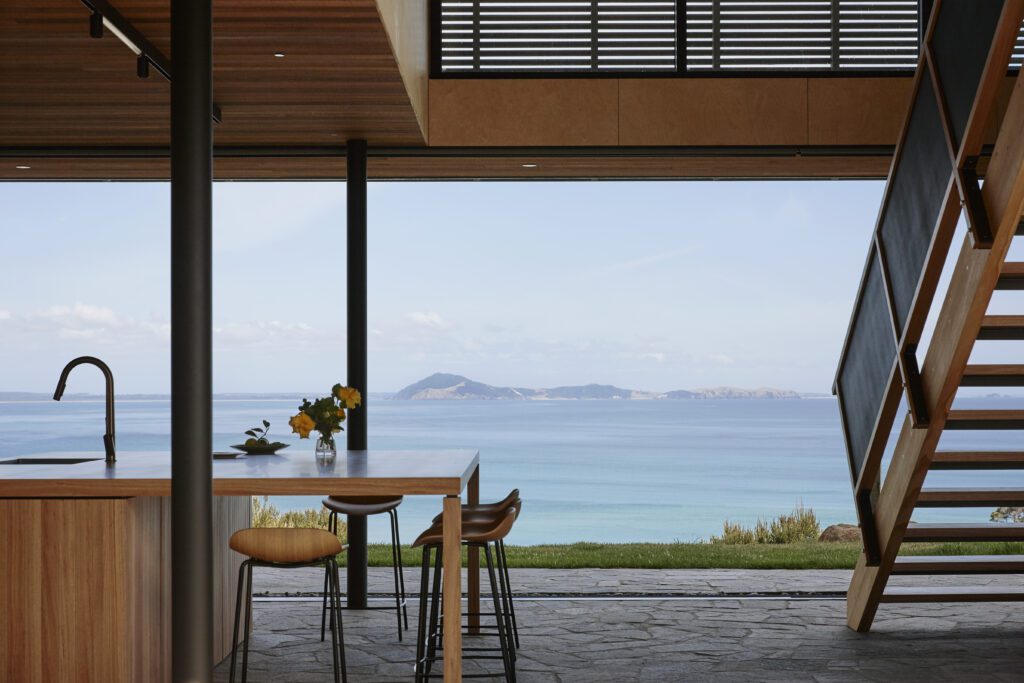The Canadian owners of this Auckland home by Fearon Hay escape brutal northern hemisphere winters for this stunning beach-side location
A Canadian couple build a holiday house in Auckland
It might seem a little odd to design a holiday house in the middle of an Auckland coastal suburb, but that’s exactly what the owners of this home asked Fearon Hay Architects to do. Based in Canada, the owners and their children visit the house each year to escape their winters, having fallen in love with Auckland on a holiday there two decades ago.
The result is something a little different to the average Auckland mansion – it might be two sites back from one of the city’s most beautiful beaches, but it’s an exercise in laid-back reduction. You have to admire their bravery. How many owners building a house in the suburbs and fretting about resale value would split the bedrooms between the main house and a sleepout across the lawn?
“It sounds strange now, but the idea of the East Coast Bays and Takapuna, in fact the whole North Shore, was that it was beach houses,” says Tim Hay of the home’s beginnings. “We wanted it to feel like a couple of cabins, somewhere between bach, beach shack, cabin and crib.” From the street, there’s a little dance as you work out how to approach the place – there is no front fence and no gate, barely even a path to guide you down to the front door.
The house is exclusively used in summer and the approach is down a grass path to a small deck and through bi-folding glass doors into a long, narrow living space that is essentially a breezeway open on three sides, with sliding glass doors and windows and white metal screens flowing out to the gently sloping lawn.

[quote title=”” green=”true” text=”We enjoyed the idea of a city beach house” marks=”true”]

“The idea of buildings in the lawn is something we quite like,” says Hay. “It’s a beach thing – it has a casualness that works.” The site is long and narrow, and you can hear the waves wash onto the beach, which is visible from the main bedroom upstairs.
Hay and his co-architect Jeff Fearon twisted the main house slightly on its axis so that it peeks out at the ocean in between two houses in front – a move that Hay describes as “pulling its bum in” and which has the effect of subtly guiding you down the gently sloping section.
The closeness of those neighbours also drove the architects to install perforated metal screens around the entire structure: they can be opened up completely or shut down for privacy. When this happens at night, the whole thing glows like a lantern.

First impression? Two simple white boxes. But where it could easily have turned into something minimal and cold, Fearon Hay’s plan has the buildings clad in white-painted macrocarpa boards, rough-sawn for texture and warmth. The same timber is used on ceilings throughout the house.
Instead of covering the structure up with expensive materials, they left the four steel portal frames exposed and painted them a crisp white. The same shade of white was applied to the exposed timber rafters that have been designed to change direction in a beautifully thoughtful way above the kitchen, defining the zone and casting pretty shadows. The floors are polished concrete, and the joinery is black aluminium.
[quote title=”” green=”true” text=”It’s a simple, robust palette that is beautifully detailed” marks=”true”]
It’s easy to forget what a technically complex task this is. Services from upstairs are neatly built in between two sets of rafters, then capped by painted macrocarpa, a feat that takes head-breaking precision in design and construction. Fearon and Hay slaved over the details, ably assisted by builder Josh Dalton, who has constructed a number of their designs. “We had to think really hard about how to build the structure,” says Hay. “The house is quite skeletal – everything is exposed.”

Upstairs, it’s delightfully simple: an airy bedroom with a view of the ocean, a study and bathroom in between. The rooms are modestly sized; walkways are economical without feeling mean and yet there is a slipperiness to the plan – the macrocarpa ceiling extends over the tops of the walls, making it feel like one continuous space, while large white MDF doors on chunky white metal rails slide back and avoid occupying too much space.
It’s in the placement of the second bedrooms that the house really starts to differentiate itself from its neighbours: there are two more bedrooms and a simple bathroom tucked in behind the double garage at the top of the site. This structure faces across the lawn to the main house and is reached by a timber ramp and a screened porch to allow ventilation.
This is where the couple’s children and guests sleep, an idea that harks back to thrown-together buildings on coastal sites around the country. Yet not many people do this in the city: lots of people talk about exposure to the elements, but few are brave enough to put it into practice. Maybe more people should.
Words by: Simon Farrell-Green. Photography by: Simon Wilson. Production by: Amelia Holmes
[related_articles post1=”61005″ post2=”61416″]









